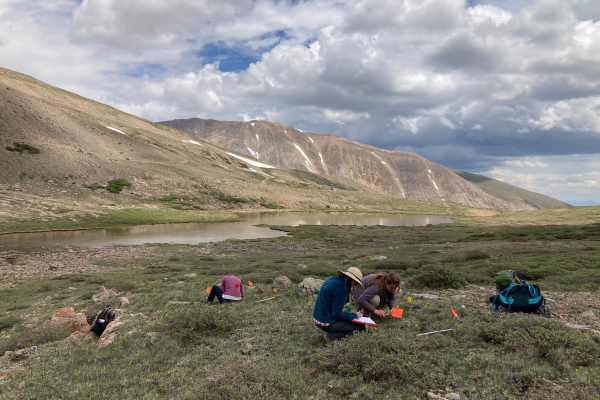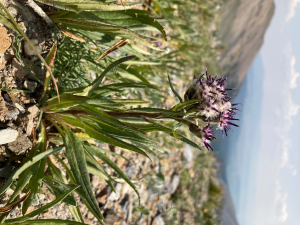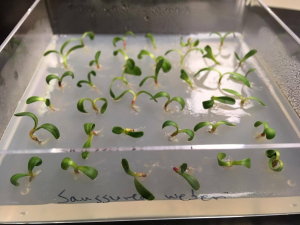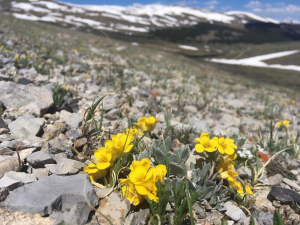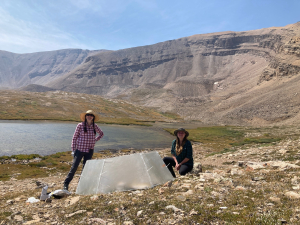PLANT BIODIVERSITY IS being lost at an accelerated rate as a result of climate change, habitat degradation, and multiple other factors. To conserve native plant species, many institutions are turning towards ex-situ methods, such as storage in seed banks. Seed banks store seeds at low moisture (3-7% moisture content) and temperature conditions (-20 °C/-4 °F or below), which slow the rate of deterioration and the loss of viability, allowing for the preservation of some seeds for up to hundreds of years. Importantly, seed collections are not established as a replacement for conserving populations in the wild, but rather to serve as a precautionary measure in the case of species extinction or population destruction. If a species or population were to become extinct in the wild, the stored seeds would allow for its reintroduction or restoration.
The most well-known seed bank in the world is likely the Svalbard Global Seed Vault, which was built into a mountainside on an island off the northern coast of Norway in the early 2000s. However, the origin of the modern seed bank begins almost one hundred years earlier in what was then the Soviet Union. Nikolai Vavilov was a Russian botanist and geneticist in the 1920s, a period when many people in eastern Europe were dying of starvation. Vavilov was interested in studying the origin of plant cultivation and crop diversity around the world in the hopes that he could find a solution to crop failures. During his expeditions around the globe, he and his team collected hundreds of thousands of seeds from 64 countries and brought them back to his home base in Leningrad, creating what was then the largest seed bank in the world. The seed collections became a target in the Siege of Leningrad during World War II. For over two years, a group of scientists preserved and protected the seed collections in the basement of a building as they starved and fell victim to disease. In total, twelve of the scientists died of starvation while protecting the seeds, but the seeds survived. Svalbard and so many other seed banks are direct descendants of the Leningrad seed bank and the scientists who collected and protected those seeds.
Until somewhat recently, most of the research in the world’s seed banks had been primarily focused on seed collections and storage longevity of crop species. Alternatively, collections of rare species too often went into frozen storage with little data collected on the viability change of those collections during storage. But a few decades ago, scientists began strategically thinking about using seed banks to conserve rare native plant species in case of extinction or population destruction.
Denver Botanic Gardens has been collecting seeds of rare native Colorado species since the late 1980s when it became one of the first partnering institutions with the Center for Plant Conservation (CPC). Over the past thirty years, partnering institutions with CPC have been making seed collections of rare species across the United States and preserving those seeds in frozen storage. Seeds of some species can survive for hundreds of years in a seed bank with no reported ill effects on germination, growth, or survival. However, many species can’t survive for extended periods, or even at all, in a seed bank. The Gardens collect seeds of native Colorado flora to conserve species outside of the wild (ex-situ) and in recent years have made a concerted effort to include alpine species in our seed collections.
However, recent studies from Italy and Australia have shown that alpine species are short-lived in seed banks compared to low elevation species. Through an Institute of Museum and Library Services grant, I used accelerated aging experiments to determine if alpine species in Colorado exhibit this same behavior. Seeds are placed in an airtight box with a lithium chloride solution, which is used to raise the relative humidity of the seeds at a high temperature (113°F/45°C). This process accelerates the loss of viability of the seeds, simulating storage time in a seed bank. Seeds are taken out at regular intervals over the course of 100 days and placed in previously determined germination conditions. I found that four alpine species from Colorado – Castilleja puberula, Heterotheca pumila, Physaria alpina, and Saussurea weberi – were short-lived in accelerated aging conditions. Although the study found that alpine species from Colorado are short-lived through artificial aging, seeds may survive for years to decades in ex-situ seed bank conditions where temperature and relative humidity are kept low. The standard protocol for seeds stored in ex-situ seed banks is to test the viability every five to ten years. At Denver Botanic Gardens, we test viability of our seed collections every five years. However, given the results of this study, we will amend our protocols to test the viability of stored alpine seeds every three years.
The North American Botanic Garden Strategy for Alpine Plant Conservation has advocated for the conservation of alpine plants and ecosystems, as alpine areas are particularly threatened by climate change. Two targets within the Strategy call for the ex-situ conservation of alpine plants – 60% of all alpine plants and 75% of threatened alpine plants – by 2030. These targets involve important actions towards alpine plant conservation; however, if seeds go into storage with little understanding of longevity, time and resources may be wasted if viability is lost prior to utilizing the seeds. As such, seeds should not be collected haphazardly with no plans for use in the subsequent decade. Seed conservation measures for alpine plants should involve viability testing every three years, grow-outs in greenhouses, and reintroduction and/or recollection of the seeds if a decline in viability is becoming evident.
In thinking about restoring populations of native alpine species using stored seeds, it is important to consider the role of climate change and how the climate may have drastically changed since seed collection. Furthermore, how might a restored population adapt to a continually changing climate? Through a grant from the Colorado Native Plant Society, I am using open-top chambers to experimentally raise temperatures in the alpine to study the effects of increased temperature on a rare Colorado alpine endemic, Physaria alpina. The chambers increase the temperature by about 1.5°C (2.7°F) in a three-foot (0.9 m) diameter area within a population of the study species. Fitness measurements such as height, flower and fruit production, and survival are recorded and compared to plants in control plots without warming. Seeds will also be collected from the plants inside the warming chambers each year to understand how offspring may adjust germination requirements to match changes in temperature. This study will be in place for at least five years and will allow us to understand the impacts of increased temperature on rare alpine plants of Colorado and be better able to prioritize species and populations for in-situ and ex-situ conservation.
Climate change can be daunting to think about, and sometimes it feels like there may not be any hope. But we need to remember that alpine plants are resilient, and various organizations are working toward their conservation so that we don’t lose our beloved alpine treasures.

